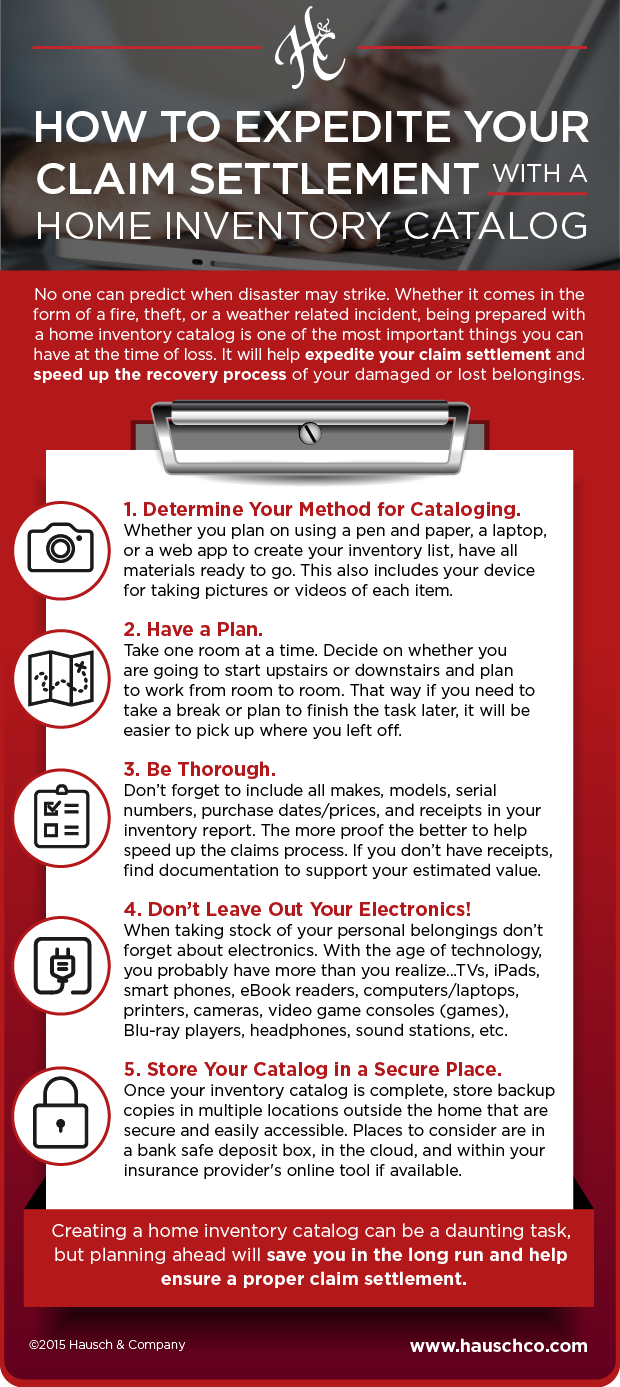
Do you know how many belongings you have and how much all of them are worth? No one wants to think about bad things happening to your home. But, if disaster strikes due to a fire, theft, or weather related incident, will you know how much it would cost to replace everything you own? Having an accurate inventory of your belongings and proof of ownership is one of the most important things you can have at the time of loss. It will help expedite your claim settlement and speed up the recovery process.
A comprehensive home inventory list catalogs your possessions and should include receipts, detailed descriptions and photos. Almost 6 out of 10 Americans do not have a home inventory of their possessions, according to the National Association of Insurance Commissioners (NAIC). If you are one of those individuals, we’ve provided some tips to help you start the cataloging process. It may seem overwhelming and will take time to compile, but planning ahead will save you in the long run and help ensure a proper claim settlement.
- Catalog one room at a time. Take pictures of the items in the room and include descriptions for each. Pay special attention to your most valuable possessions including jewelry, art, furniture, appliances, electronics and collectibles.
- Be detailed in the item description. Include all makes, model, serial numbers, purchase dates, and costs or estimated value.
- The more proof the better. Attach any receipts, credit card statements or other documents such as appraisals to help prove value. If you don’t have your receipts or other proof of purchase, try to document an estimated value.
- Check with your insurance provider for tools to help. Most insurance companies will have a checklist that you can utilize to help facilitate the process. Some also provide an online system to catalog and store your home inventory contents.
Once your catalog is complete, remember to update it after you acquire new items of value and make sure to keep it in a secure place, such as a safe deposit box. For even more peace of mind, make backup copies and save to the cloud or within your insurance provider’s online tool if available.
View our infographic below for additional tips and steps to creating a comprehensive home inventory catalog:

